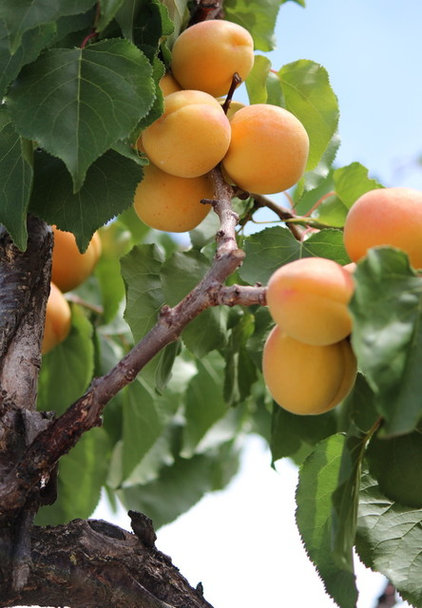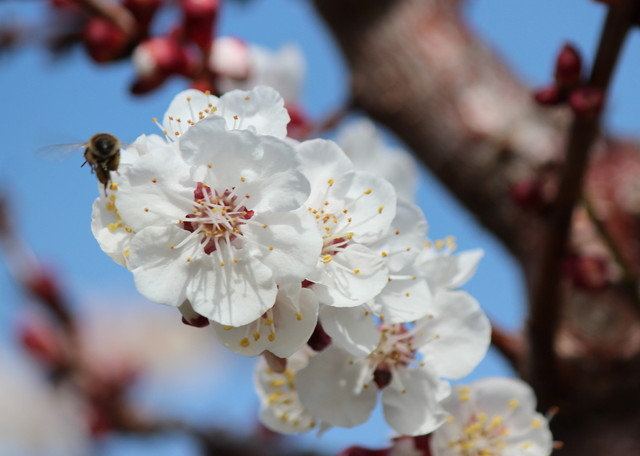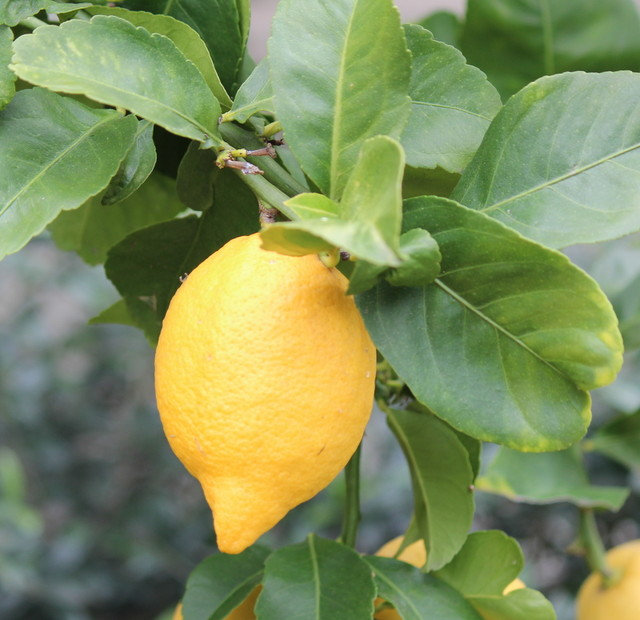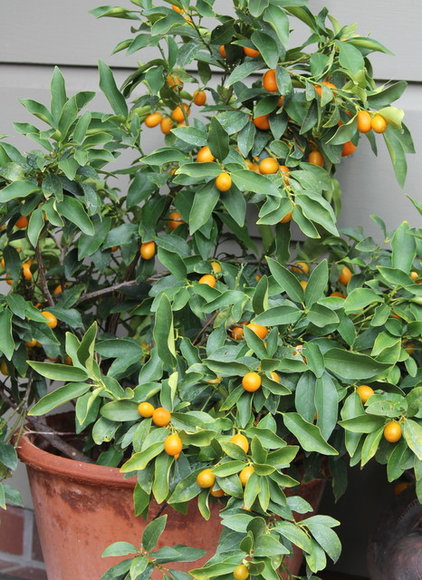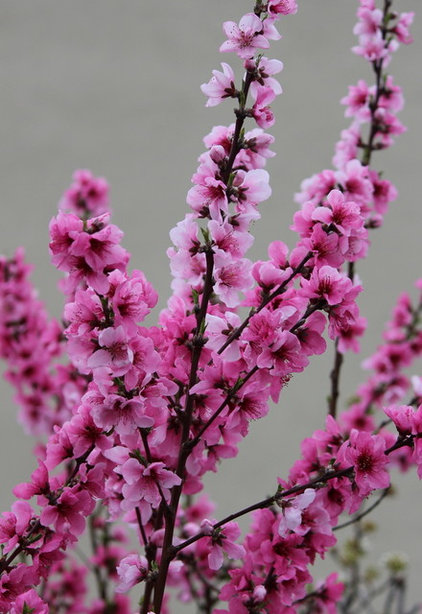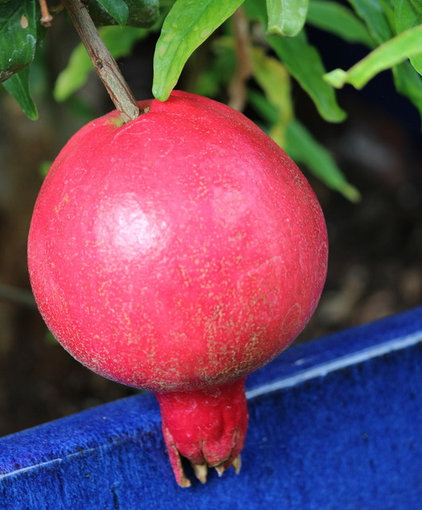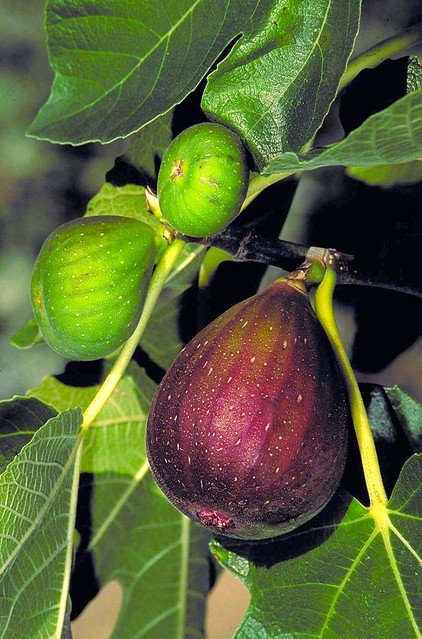If You Have Room for Only One Fruit Tree
These are plants that I have grown or wish I could grow. You might want to consider the same factors that I do: Will the homegrown, tree-ripened fruit taste better than what you can get from the amazing array at farmer’s markets these days? Is the tree fun or interesting or pretty to grow? Can you avoid the complications of pest control or pruning? Notice that below I don’t bring up a number of popular fruit trees, such as apples, which often need precise pest control — and so many good apples are available at markets today.
There’s no comparison between typical market fruit and apricots that are allowed to ripen on the tree to a near squishy, unshippable stage. Trouble is, the apricot is fussy about where it grows.
Botanical name: Prunus armeniaca, many varieties
Where it will grow: Hardy to -20 degrees Fahrenheit (USDA zones 5 to 9; find your zone). The trees are fairly hardy but bear fruit well only in climates without spring frosts. Mainly that means California’s coastal valleys.
Water requirement: Moderate; the soil must be moist while the fruit is developing.
Light requirement: Full sun
Mature size: 15 to 20 feet tall and wide
Care: Plant bare-root trees in winter. Prune in summer after the harvest. As with most fruit trees, bone up on pruning, fertilizing and pest control.
See how to grow apricots
Lemons (shown here), oranges, grapefruit and other close relatives make handsome trees in zones 9 and 10. But the fruit won’t measure up to your expectations unless you live in exactly the right place — lemons, for example, don’t grow well where grapefruit does, and vice versa. Check what’s best for your area, and for tight spaces, go with a dwarf variety.
How to keep your citrus trees healthy
The adaptable kumquat is far more climate tolerant than its citrus kinfolk. Grow it for the glossy fruit display, not for your juice maker. The bushy, shiny-leaved plants are small enough to live in containers for several years. Move your container plant into a protected spot (or indoors) if winter nights get too chilly.
Where it will grow: Hardy to 20 degrees Fahrenheit (USDA zones 9 to 10)
Water requirement: Moderate; more in hot climates
Light requirement: Full sun or partial shade (the latter especially in a container in the hottest climates)
Mature size: 8 feet tall and 6 feet wide when grown in the ground
Care: A good soil mix is a must. Keep the foliage shiny green with citrus food; yellow leaves usually indicate a lack of iron.
See how to grow kumquats
Beautiful during its short bloom time and luscious at harvest, the peach tree has several attributes that may outweigh its downsides; it’s sometimes disease-prone, short lived and needy about pruning. Your call.
Botanical name: Prunus persica, many varieties
Where it will grow: Hardy to -20 degrees Fahrenheit (USDA zones 5 to 9)
Water requirement: Water deeply and regularly.
Light requirement: Full sun
Mature size: 15 to 20 feet tall and wide
Care: Plant bare-root trees in winter. Prune in late winter. Learn about specific demands for pruning and pest control.
See how to grow peaches
It’s easy to grow, even in a container, and demands little water. It’s fun to watch the waxy red flowers develop into beautiful globes full of juicy seeds.
Botanical name: Punica granatum
Where it will grow: Hardy to 0 degrees Fahrenheit (USDA zones 7 to 11)
Water requirement: Light to moderate
Light requirement: Full sun
Mature size: 10 feet tall and wide when grown in the ground; smaller in a pot
Care: Feed several times during the growing season. Prune to control size in winter, when the plant is leafless. During the growing season, cut back branch tips for bushiness — don’t cut back too far, though, or you’ll lose flowers and fruits.
Whether you want to grow this depends on how much you like fresh figs, which are really perishable and expensive to ship. Trees can be productive — often to a messy degree. It’s not a tidy tree for small spaces.
Botanical name: Ficus carica, many varieties
Where it will grow: Hardy to 0 degrees Fahrenheit (USDA zones 7 to 9)
Water requirement: Light
Light requirement: Full sun
Mature size: 15 to 30 feet tall and wide or more when grown in the ground. In a big pot, pruning can keep the height at less than 8 feet.
Care: Prune back in winter
